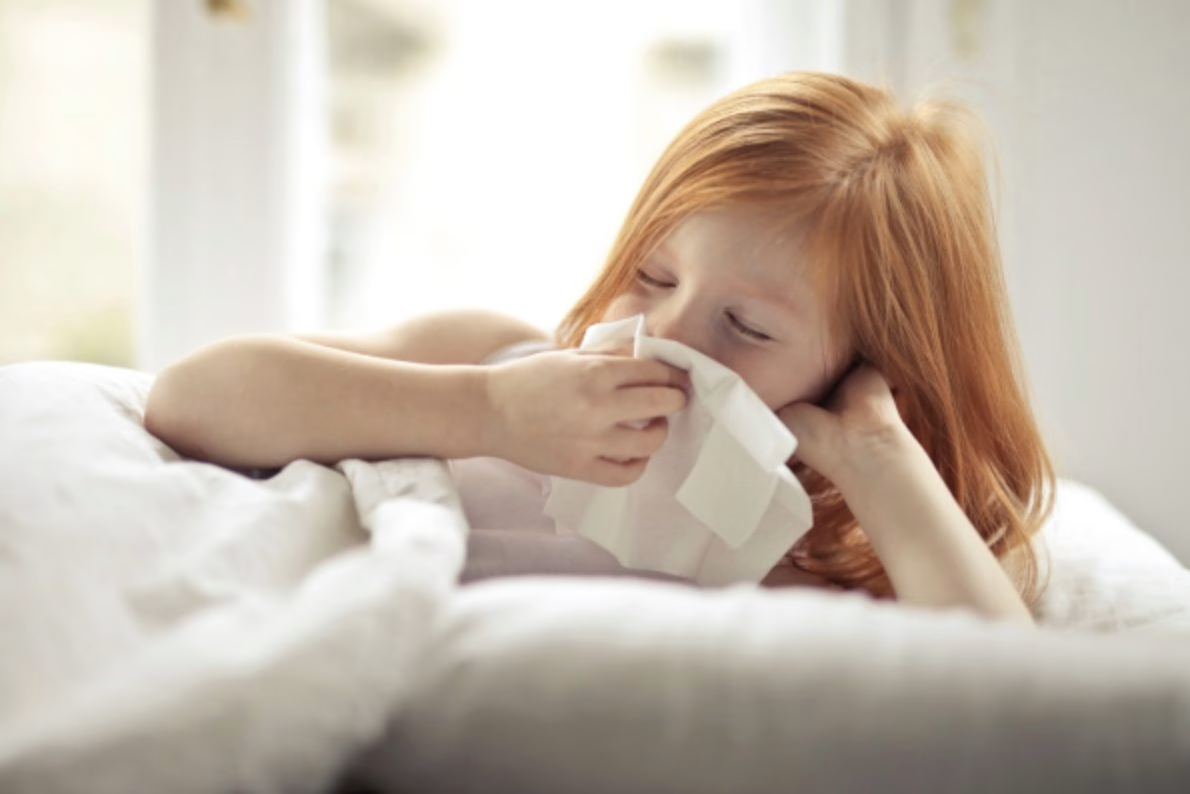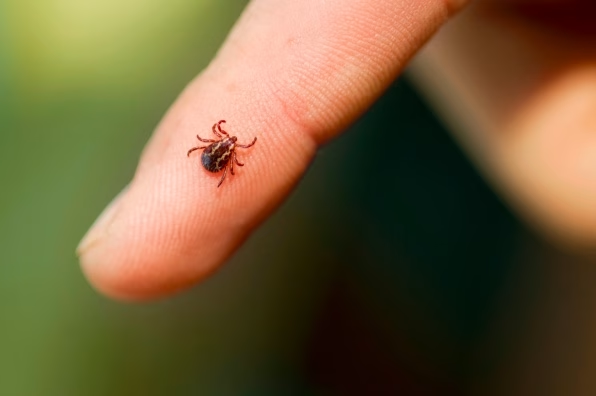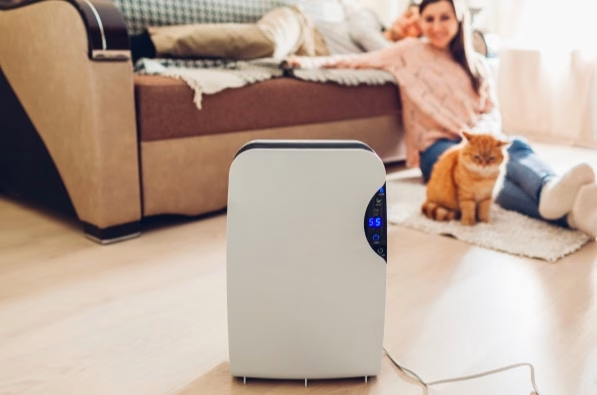
The first day of school should be exciting for your child, not stressful. Yet for parents of children with allergies, the excitement is often mixed with concern. Will the cafeteria have allergy-safe options? Will classmates bring peanut butter snacks? Will spring pollen drift in through the open windows?
Classroom allergies are not a rare problem; they’re part of everyday life for millions of families. The Centers for Disease Control and Prevention (CDC) reports that 1 in 13 children in the U.S. has a food allergy. Add in seasonal and environmental allergies, and the numbers grow significantly.
In Massachusetts, school nurses, teachers, and administrators work hard to protect students with allergies. But the reality is that schools are high-risk environments for exposure, shared snacks, art supplies, sports fields, and field trips can all introduce allergens. That’s why preparation and communication are crucial.
At AFC Urgent Care Beverly, we help families across Beverly, Swampscott, North Andover, Methuen, and Haverhill develop customized school allergy plans. Our approach covers everything from accurate diagnosis to symptom management, giving parents and children the tools they need to stay safe all year long.
Types of Allergies Children Face in School
Understanding the different allergy types helps you create a targeted prevention plan.
1. Food Allergies
- Common triggers: Peanuts, tree nuts, milk, eggs, soy, wheat, fish, shellfish.
- How they spread in school: Snack swaps, shared tables, contaminated utensils, unwashed hands.
- Risks: Even microscopic traces can trigger reactions in sensitive children.
2. Environmental Allergies
- Common triggers Include Dust mites in carpets, mold in older buildings, and pet dander from classmates’ clothing.
- Seasonal factors: Ragweed pollen in late summer/fall, grass pollen in spring, tree pollen in early spring.
- Symptoms: Sneezing, congestion, itchy eyes, and fatigue that can impact learning.
3. Insect Sting Allergies
- Common triggers: Bees, wasps, hornets.
- Risks at school Include Outdoor recess, sports fields, and nature-based learning activities.
- Potential severity: Can range from mild swelling to full anaphylaxis.
The Hidden Risks of Allergies in a Classroom Setting
Even the most allergy-aware schools face challenges:
- Multiple points of contact: Your child may interact with dozens of classmates, several teachers, and after-school staff, all of whom must know their allergy needs.
- Surprise exposures: Birthday parties, science experiments, or art projects might introduce allergens.
- Peer pressure: Children may feel embarrassed to speak up about symptoms or ask if food is safe.
Step-by-Step Parent Preparation Guide
Step 1: Schedule a Pre-School Year Allergy Evaluation
Before the year begins, visit AFC Urgent Care Beverly to:
- Confirm existing allergies with testing.
- Update your child’s allergy action plan.
- Renew prescriptions for epinephrine auto-injectors or antihistamines.
- Get documentation for the school nurse.
Step 2: Create a Written Allergy Action Plan
Your plan should clearly outline:
- Allergens and reaction history.
- Symptoms to watch for (mild, moderate, severe).
- When to give antihistamines vs. epinephrine.
- Emergency contacts and healthcare provider information.
- Instructions for 911 Calls in Severe Cases.
Tip: Provide copies to the school nurse, teacher, cafeteria manager, and after-school program leaders.
Step 3: Teach Your Child Self-Advocacy Skills
By the time school starts, your child should:
- Know what foods and substances to avoid.
- Recognize early symptoms and report them immediately.
- Avoid sharing snacks or drinks.
- Understand how to use their prescribed medications if they’re old enough.
Step 4: Meet with Teachers and School Staff
Arrange a meeting before the first day to discuss:
- Safe snack and lunch policies.
- Lunchroom seating arrangements.
- Cleaning protocols for desks, tables, and shared materials.
- Field trip safety plans and chaperone briefings.
Step 5: Manage Seasonal Allergies Ahead of Time
In Massachusetts, pollen season can overlap with the school year. Proactive steps include:
- Starting daily antihistamines before peak pollen counts.
- Keep tissues and saline spray in your child’s backpack.
- Requesting closed windows in classrooms during high-pollen days.
- Encourage handwashing after outdoor activities.
Real-Life Example: How Preparation Prevented a Crisis
Last year, a Beverly second grader with a peanut allergy avoided a severe reaction thanks to an updated action plan. During a class birthday celebration, the teacher spotted an unlabeled cookie and asked the child to skip it, something they felt confident doing because they’d practiced saying, “No thank you, I have an allergy.” The school nurse was informed, and no exposure occurred. Preparation, communication, and a confident child made all the difference.
Recognizing Allergy Symptoms Early
Mild to Moderate Symptoms:
- Itchy eyes or nose
- Sneezing or coughing
- Skin rash or hives
- Mild swelling of the lips or eyes
Severe Symptoms (Anaphylaxis):
- Difficulty breathing or swallowing
- Swelling of the tongue or throat
- Sudden dizziness or fainting
- Drop in blood pressure
Immediate administration of epinephrine and calling 911 is essential for severe reactions.
Building Awareness Among Classmates and Parents
Creating an allergy-aware classroom benefits everyone. Consider:
- Sending a letter home to parents about safe snacks.
- Posting allergen-free guidelines in the school.
- Hosting a brief allergy awareness session with students.
Allergy-Friendly Lunch and Snack Ideas
If your child’s school enforces allergen restrictions, here are some safe options:
- Fresh fruit cups
- Yogurt with granola (nut-free)
- Cheese sticks with whole-grain crackers
- Sunflower butter sandwiches (instead of peanut butter)
AFC Urgent Care Beverly’s Allergy Care Services
We help families:
- Diagnose allergies with skin or blood testing.
- Prescribe preventive medications for seasonal symptoms.
- Refill epinephrine auto-injectors and antihistamines.
- Provide urgent treatment for mild to moderate reactions.
- Coordinate with allergists for advanced care.
With five convenient locations in Beverly, Swampscott, North Andover, Methuen, and Haverhill, urgent allergy care is always nearby. Visit AFC Urgent Care Beverly to get your child’s school year started safely.
Allergies shouldn’t limit your child’s ability to enjoy school, but they do require planning and vigilance. By working closely with your child, school staff, and a trusted medical provider, you can significantly reduce the risk of reactions.
AFC Urgent Care Beverly is your partner in creating safe, practical allergy plans. We’re here to make sure your child’s health stays on track, from the first day of school to the last.


